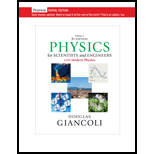
Concept explainers
The Milky Way was once thought to be “murky” or “milky” but is now considered to be made up of point sources. Explain.
The explanation for the statement “The Milky Way was once thought to be murky or milky but it is now considered to be made up of point sources”.
Answer to Problem 1Q
The Milky Way was once thought to be murky or milky but it is now considered to be made up of point sources because earlier very large telescope were not available and the group of stars that appears to be cloudy.
Explanation of Solution
The sun and all the planets around and other stars around them are the part of galaxy known as Milky Way galaxy. The Milky Way was once thought to be murky or milky but is now considered to be made up of point sources because now very large telescope are available which gives the clear picture of galaxy.
Initially it was considered as murky because of the group of stars that appears to be cloudy but, now it is considered to be point sources because vary large telescope proved that these clouds are extravagate outside the galaxy.
Conclusion:
Therefore, the Milky Way was once thought to be murky or milky but it is now considered to be made up of point sources because earlier very large telescope were not available and the group of stars that appears to be cloudy.
Want to see more full solutions like this?
Chapter 44 Solutions
Physics for Scientists & Engineers, Volume 2 (Chapters 21-35)
Additional Science Textbook Solutions
Campbell Essential Biology (7th Edition)
Organic Chemistry (8th Edition)
College Physics: A Strategic Approach (3rd Edition)
Introductory Chemistry (6th Edition)
Microbiology with Diseases by Body System (5th Edition)
Human Physiology: An Integrated Approach (8th Edition)
- 8. With the aid of a diagram draw the following electric circuit and use the resistor as the load, (a) Closed circuit (b) Open circuitarrow_forwardLab 8 Part 3 PHET Wave Interface simulation. I am having trouble with this part of the lab.arrow_forwardMick and Rick are twins born on Earth in the year 2175. Rick grows up to be an Earth-bound robotics technician while Mick becomes an intergalactic astronaut. Mick leaves the Earth on his first space mission in the year 2200 and travels, according to his clock, for 10 years at a speed of 0.75c. Unfortunately, at this point in his journey, the structure of his ship undergoes mechanical breakdown and the ship explodes. How old is Rick when his brother dies?arrow_forward
 College PhysicsPhysicsISBN:9781305952300Author:Raymond A. Serway, Chris VuillePublisher:Cengage Learning
College PhysicsPhysicsISBN:9781305952300Author:Raymond A. Serway, Chris VuillePublisher:Cengage Learning College PhysicsPhysicsISBN:9781285737027Author:Raymond A. Serway, Chris VuillePublisher:Cengage Learning
College PhysicsPhysicsISBN:9781285737027Author:Raymond A. Serway, Chris VuillePublisher:Cengage Learning Horizons: Exploring the Universe (MindTap Course ...PhysicsISBN:9781305960961Author:Michael A. Seeds, Dana BackmanPublisher:Cengage Learning
Horizons: Exploring the Universe (MindTap Course ...PhysicsISBN:9781305960961Author:Michael A. Seeds, Dana BackmanPublisher:Cengage Learning University Physics Volume 3PhysicsISBN:9781938168185Author:William Moebs, Jeff SannyPublisher:OpenStax
University Physics Volume 3PhysicsISBN:9781938168185Author:William Moebs, Jeff SannyPublisher:OpenStax Physics for Scientists and Engineers: Foundations...PhysicsISBN:9781133939146Author:Katz, Debora M.Publisher:Cengage Learning
Physics for Scientists and Engineers: Foundations...PhysicsISBN:9781133939146Author:Katz, Debora M.Publisher:Cengage Learning An Introduction to Physical SciencePhysicsISBN:9781305079137Author:James Shipman, Jerry D. Wilson, Charles A. Higgins, Omar TorresPublisher:Cengage Learning
An Introduction to Physical SciencePhysicsISBN:9781305079137Author:James Shipman, Jerry D. Wilson, Charles A. Higgins, Omar TorresPublisher:Cengage Learning





